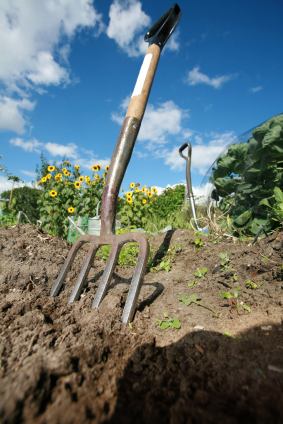You will need to select a site that gets at least 5 hours of sunlight per day, that means a north facing site is ideal.
This is particularly important in winter when there are less sunlight hours in the day, with less intensity. You may even consider different spots for winter and summer gardens, as it is ideal to get some late afternoon shade from a western facing wall over the vegetable bed in summer.
The site should be open and level, and away from large trees or shrubs whose roots will compete with your plants for water and nutrients. Initially a 1.5m square area is a manageable size to start with, and will give you enough room to grow different things.
When you are a confident grower, try to establish 3 growing areas to allow for rotation of your crops. This is important to manage soil borne pests & diseases. Some resources can get a bit complicated with advice on crop rotation, don’t stress about this too much early on – just focus on keeping the plants healthy by fertilising and treating any problems quickly. Refreshing the soil with organic matter during the natural seasonal breaks between the cooler and warmer crops will keep the garden healthy.
If you start to outgrow the vegetable garden, start experimenting with pots and wooden crates. Also, some crops look wonderful when mixed into traditional garden beds – particularly leafy plants like Chard or Parsley. Perennial crops such as Rhubarb, Asparagus and Artichoke can also be planted amonst the ornamental beds or in half wine barrels.
Raised garden beds are a great way to get started – there are many suppliers of galvanised steel garden beds. Either fill with a soil that in high in organic matter – or use the “lasagne” or layered no-dig method to fill the bed. This involves a layer of straw at the base, followed with compost, worm poo or manure, more straw and repeat until filled. Over time the layers breakdown and you have a wonderfully productive growing medium.
- Raised garden beds can be more productive and easier to manage for the following reasons:
- Better drainage
- Improved oxygenation of the soil, less compaction as you don’t stomp around in the garden when you are digging, weeding or planting
- Easier to remove weeds
- They warm up faster in spring than the ground soil temperatures, meaning you can get summer crops underway faster
